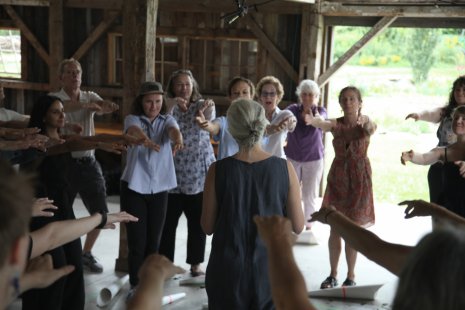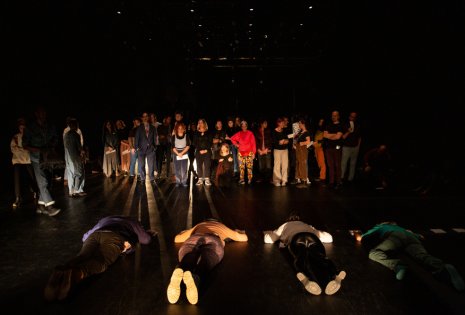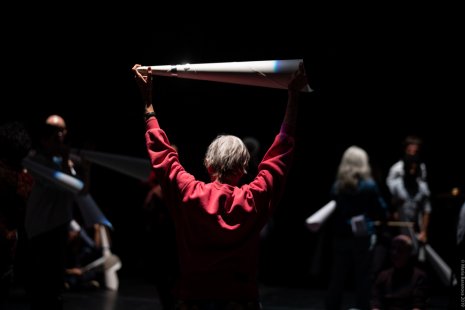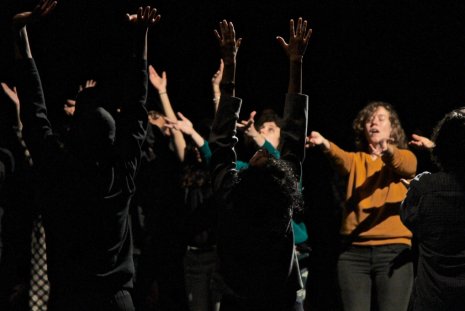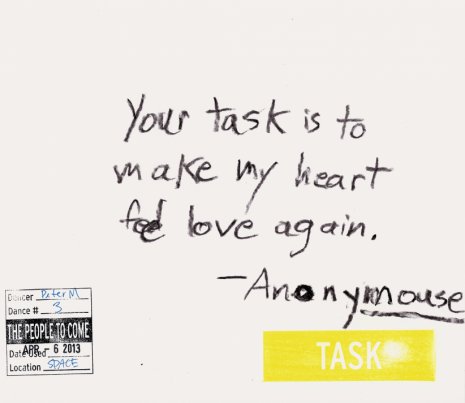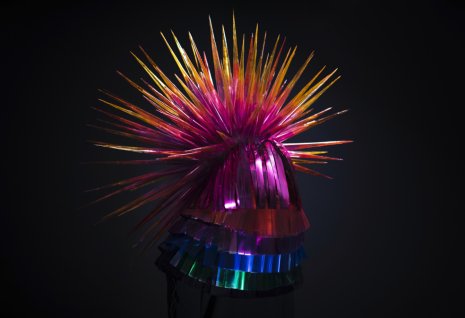In Yanira's Words...
In my latest projects, the public has become the primary choreographic actor, and the artistic team, facilitators for the public’s embodiment. My focus on participatory scenarios with the public has led to forms outside of live performance: printed performance manuals, interactive video installations, a text-based computer game, a podcast.
My work reflects my diasporic relation to the U.S., to my twice-colonized homeland Borikén (Puerto Rico), to my body as a container/conduit for infinite iterations and convergences of colonized and colonizer. Driven by an unrelenting pursuit of mutual accountability and complicity in performance, my work complicates the locus of authorial power, inviting audiences into the questioning of control within the work alongside me.
Specifically, I develop performance scores and scenarios where the work unfolds in real time in response to the presence and participation of the audience. Co-creating with my collaborators and the public, I investigate choreography as a practice of collective embodiment, grappling with agency and communal action as a body politic. The process of gathering, witnessing and decision making is where performance and civics merge and, for me, is the critical, challenging, and transformational work of performance.
Coming from a colonized territory, this communal making unearths power and control, offering useful discomfort, potential change and self-determination. I propose my work as a place of collective transcription, a complicit space, where the public is invited to write themselves in.
For each work, I co-design the circumstances of participation—not only in writing the score but how the space (physical, virtual, on the page) is designed to support/hold the action. The spatial arrangement for entering, exiting, viewing, participating is critical to how the work functions. Environments are often in flux, engaged in a constant re-creation and tearing down of spaces. My work rarely provides a stable viewing space.
As a young artist, coming into the practice of performance in my first year as an undergraduate at Amherst College, I encountered score-making as a device that I latched onto as a means of collectively developing a vision. I wrote simple instructions and a group of people negotiated them. This was exciting work for me, witnessing “meaning” being constructed in real time. As someone who learned English as a second language from watching television, this was a means of communicating that came very naturally to me: making meaning(s) of visual symbols/signals/clues. Early on, this was dance-making for me.
Coming to NYC in the mid-90s, and taking dance classes downtown at places like Movement Research, I began working with dancers and utilized scores primarily as a means within the rehearsal process to set movement material. This process was challenging, but I found that it was not “live” enough for me and, in 2009, I started to work with a group of collaborators to find ways to negotiate the work in real time, developing situations where audiences determined the final outcome of the work. Collaborators who have built this work alongside me include: environment designer Kathy Couch, sound artist and programmer Stephan Moore, videographer Peter Richards, dramaturg Susan Mar Landau, and performers Anna Azrieli, Kyle Bukhari, Simon Courchel, Leslie Cuyjet, devynn emory, Iréne Hultman, Luke Miller, Peter Musante, Peter B. Schmitz, Kirsten Michelle Schnittker, David Thomson, Jeremy Toussaint-Baptiste, Pamela Vail, Tara Aisha Willis, Darrin Wright, Kimberly Young.
We developed systems to disrupt choreography that relied on audience activity. We utilized sensors to track audiences to construct spontaneous music, to shift choreographic directions. We invited audiences to create materials from which the performers developed work. We developed a computer game that depended on the authorship of the visitor to engage video and text materials created by the performers.
All these works, in different ways, broke down the separation between performer and audience, insisting on co-constructed work and on releasing “meaning” and “outcome” to the collective gathered.
In 2018/19, we developed a work for the audience to perform which became a turning point in my practice. In Last Audience, the audience enacted a different set of scores each night based on the theme of judgment in the requiem mass. It was a practice of embodiment, agency, and potential collective transformation.
In Summer 2020, I was invited by the Museum of Contemporary Art/Chicago to adapt Last Audience into a printed manual of performance scores for the public to perform at home. Working on Last Audience: a performance manual during the height of the pandemic and social uprisings, prompted me to be direct in a way that I had never been about my political reasons for making work and the Last Judgment themes that were behind Last Audience.
Shortly after the manual’s release, we launched COMMUNE, a communal practice that invited people to perform a score from the manual each week as the country moved towards the presidential transfer of power. The work proliferated into dorms, kitchens, living rooms, and parks as people initiated their own processes, made their own costumes, constructed their own performances.
This practice with Last Audience: a performance manual — an embodied process of working through a moment in history in communal isolation — has profoundly changed my work. No longer dependent on a single time and place, and activated at will by audiences, this work has opened multiple possibilities and practices that hold the potential of performance for more people.
I desire to shape communal practices that are free and accessible and directly relate to civic action and embodiment. This practice centers on developing and enacting scores for the public and diversifying how a project is manifested (live, virtual, audio, video, print) to ensure that a score has multiple entry points and reaches audiences with different circumstances and abilities. The intention is to develop intimate gatherings for people to engage in relation to current events, social justice and activism work, and to propel personal agency and connection to self, community. To do this, I am in the process of redefining how I work: engaging disabled collaborators to build disability artistry into projects from their inception, building up production systems for different media, and reaching new audiences by purposefully gathering through accessible platforms.
Central to my concerns of how people gather and how systems operate is the belief that this is the crux of choreography: inherently social, it is a rehearsal for a complex relationship to civics. Making choices, refusing, participating, attending, constructing the work is practice for a body politic.


